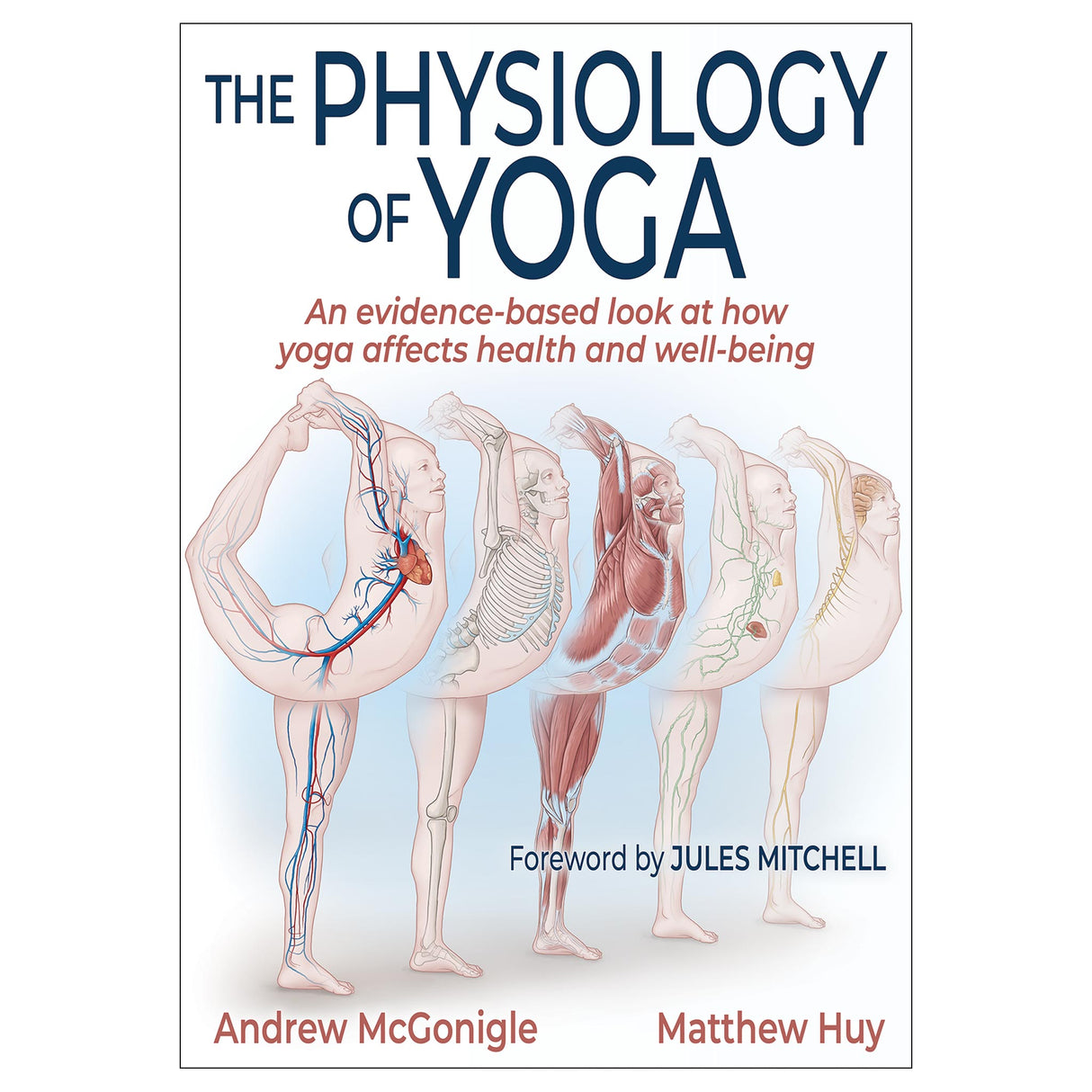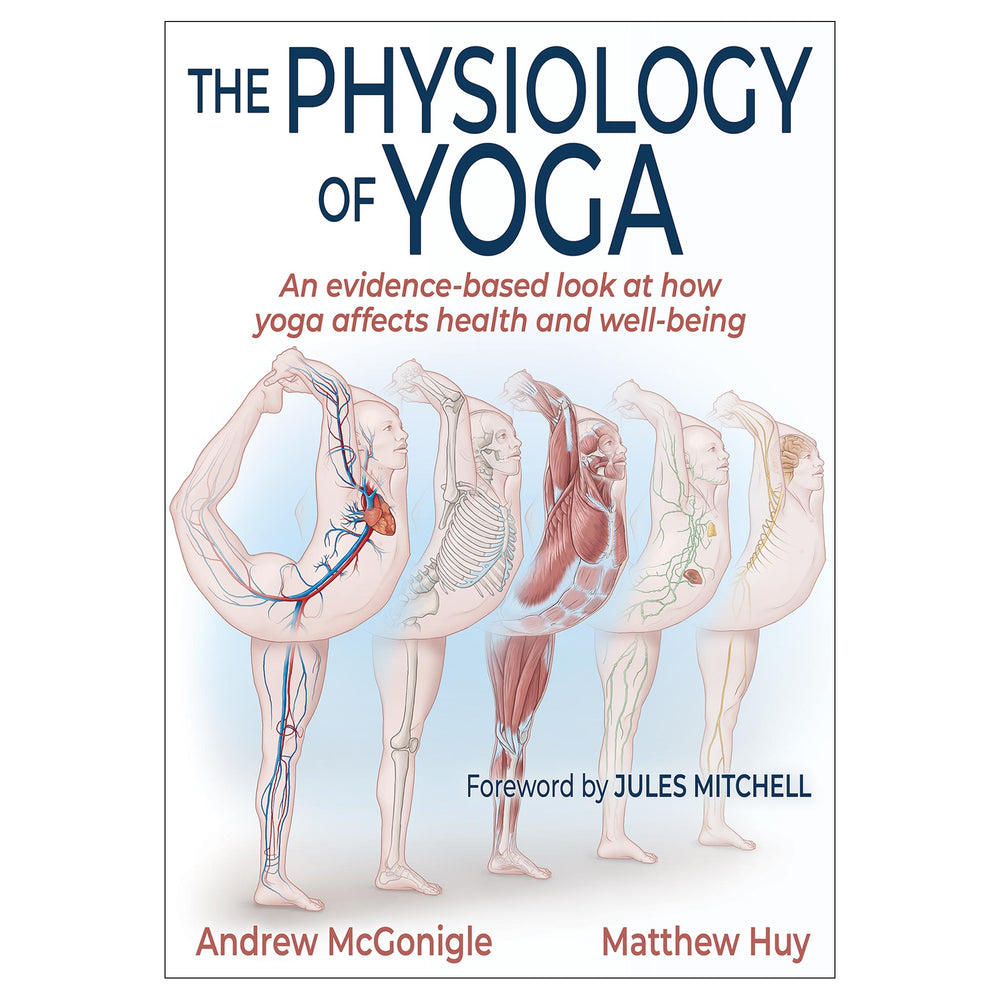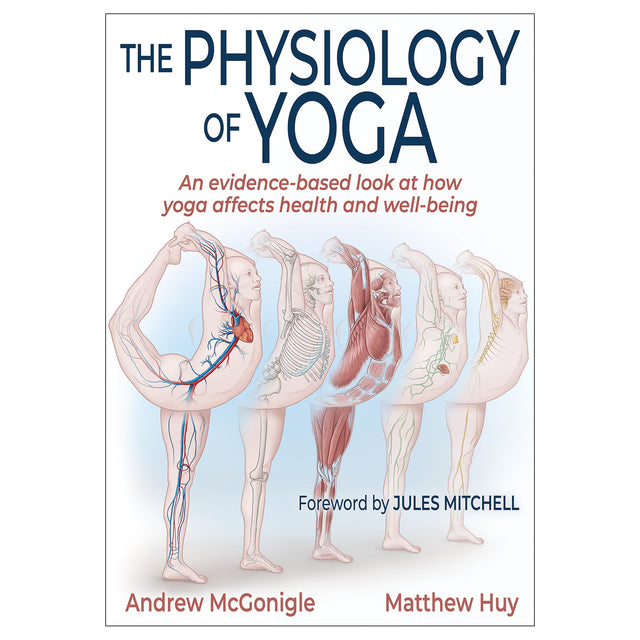Physiology of Yoga, The
Author: Andrew McGonigle, Matthew Huy
$41.95 CAD
While many people practice yoga simply because it helps them feel good, the physiological basis for yoga’s effects on the body and mind is often unknown or misunderstood. Understanding these physiological concepts can help to deepen your yoga practice.
The Physiology of Yoga separates speculation from fact by examining how the body responds and adapts to yoga within many systems of the body: musculoskeletal, nervous, respiratory, cardiovascular, lymphatic, immune, endocrine, reproductive, and digestive. Straightforward explanations guide you in sorting through conflicting information about what yoga really can help you achieve and in evaluating whether certain yoga methods provide benefits to any or all of those systems.
You can experiment with concepts through Try It Yourself sidebars, which focus on mindful movement, meditation, and breathing. The 14 Myth or Fact sidebars explore popular claims about yoga, such as whether a shoulder stand can stimulate the thyroid or if twists can detoxify the liver. You’ll get the most current research to determine the validity of various claims so you can avoid practices that could be harmful or counterproductive and can decide for yourself what works for your practice.
Finally, experience firsthand how yoga affects your physiology by exploring specific yoga poses and four sequences. Each sequence explains which of the physiological principles from the earlier chapters may be most prevalent in that sequence.
With The Physiology of Yoga, you or your students can navigate all the conflicting views and opinions about the impact of yoga and learn to practice yoga while fully enjoying the benefits of mindful movement.
Audience
Yoga teachers in training as well as current yoga instructors and enthusiasts.Bone
Joints
Muscles
Cartilage
Tendons, Ligaments, and Aponeuroses
Fascia
The Science of Stretching and Flexibility
Pathologies, Injuries, and Conditions
Conclusion
Chapter 2. Nervous System
Cells of the Nervous System
Central Nervous System
Peripheral Nervous System
Nervous System Conditions
Conclusion
Chapter 3. Respiratory System
Anatomy and Physiology of the Respiratory System
The Biomechanics of Quiet Breathing
All About the Diaphragm
Forced Exhalation and Inhalation
Atmospheric Air and Expelled Air
Good, Wholesome Oxygen?
Ujjayi Breathing
Nose Breathing and Mouth Breathing
The Psychological and Physiological Effects of Pranayama and Slow Breathing
Pathologies and Conditions of the Respiratory System
Conclusion
Chapter 4. Cardiovascular System
Blood
Heart
Circulation
Role of the Cardiovascular System in Maintaining Homeostasis
Resting Heart Rate and Cardiac Output
Heart Rate Variability
Blood Pressure
Cardiovascular Conditions
Conclusion
Chapter 5. Lymphatic and Immune Systems
Lymphatic System
Immune System
Conclusion
Chapter 6. Endocrine System
What Is a Hormone?
Cortisol: The Master Hormone
Insulin
Thyroid Hormones
Endorphins: Our Body’s Morphine
Dopamine
Pathologies
Conclusion
Chapter 7. Reproductive System
Female Reproductive System Anatomy
Female Reproductive System Physiology
Male Reproductive System
Reproductive System Conditions
Conclusion
Chapter 8. Digestive System
Anatomy and Physiology of the Digestive System
Diet and the Digestive System
Pathologies and Gastrointestinal Problems
Conclusion
Chapter 9. Practice With Confidence
Strong, Dynamic Practice
Slow Hatha Practice
Chair Yoga Practice
Restorative Yoga Practice
Conclusion
—Bernie Clark, Yoga Teacher and Author of the Your Body, Your Yoga Trilogy
“At last! A thorough, evidence-based resource (complete with much-needed myth busting!) about the many systems of the body and how a yoga practice interacts with and influences them."
—Jenni Rawlings, E-RYT, Cofounder of Strength for Yoga and Cohost of the Yoga Meets Movement Science Podcast
“Every now and then, in the 40-odd years I’ve been practising yoga, I come across a book that makes an invaluable contribution to some aspect of my understanding of yoga. The Physiology of Yoga is just such a book. I give this book my highest recommendation; it’s an essential study guide and reference source for serious students and teachers, and it should be on the recommended reading list of every yoga teacher training program.”
—Richard Rosen, Yoga Teacher and Author
“This title fills a long-standing gap in the essential reading lists for yoga teacher training programs. Hopefully, it will prevent yoga teachers from repeating some of the most commonly held myths and misconceptions about the physiological effects of yoga practice.”
—Leslie Kaminoff, Coauthor of Yoga Anatomy
“Matthew and Andrew are world-class leaders in the field of yoga anatomy and physiology. Their clear and articulate perspective about the practice is matched only by their passion and undeniable service to teachers and dedicated practitioners worldwide. In the modern era of the yoga practice, it is reassuring to know that we have their work to guide us forward.”
—Michael James Wong, Author, Educator, and Founder of Just Breathe and Krama Yoga
“Andrew and Matthew have done the work so we can do what we do better. A physiology book for anyone with a keen interest in the body. Full of detailed descriptions, clear illustrations, and beautiful images to inspire you to keep moving.”
—Naomi Annand, Yoga Teacher and Author of Yoga: A Manual for Life and Yoga for Motherhood
“The Physiology of Yoga sheds light upon the latest scientific research on how yoga affects—or doesn't affect—our bodies. It is a must for the modern yoga teacher or practitioner who seeks to learn more about yoga and anatomy from a fresh perspective.”
—Tatiana Avila Bouru, Yoga Teacher and Cofounder of Yoga With Alex and Tatiana
“The Physiology of Yoga is a truly evidence-based resource that busts many myths. It delves into some big questions about movement that would be hard to answer accurately on Google! An essential guide for all yoga teachers—new and old—packed full of useful tips and practices.”
—Kate Brandon, “The Physio Yogi,” Physiotherapist and Yoga Educator
“What a brilliant, witty book! I really loved the dispelling of myths sections and the clear and concise illustrations. It was a sheer pleasure to read. I certainly learned a tremendous amount to update myself on the latest research and current principles of physiology. This book is sure to be a constant companion for an academic doing research in yoga and the avid yogi or yogi in training who wants to take a deeper dive into how yoga affects the body.”
—Indira Subramanian, MD, Clinical Professor in the UCLA Department of Neurology









